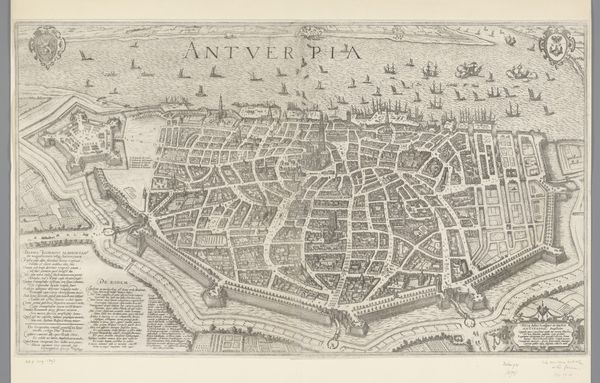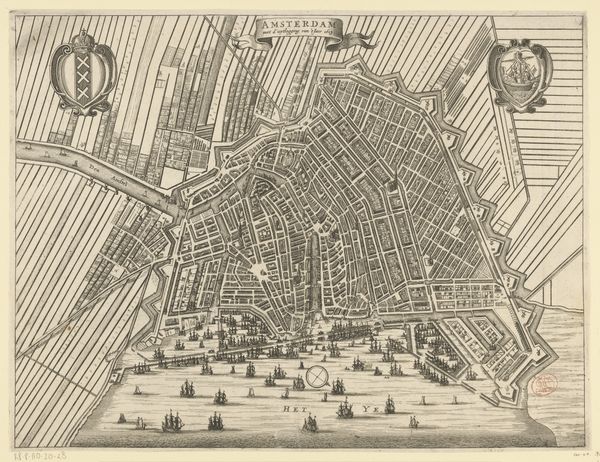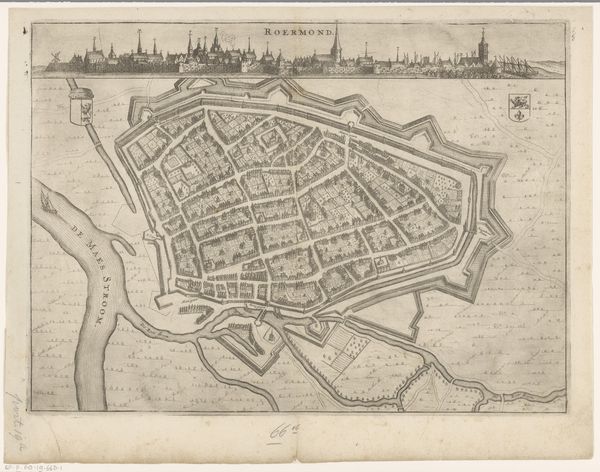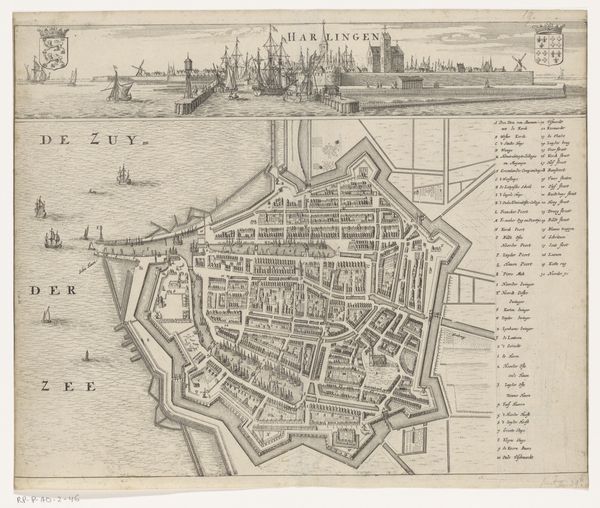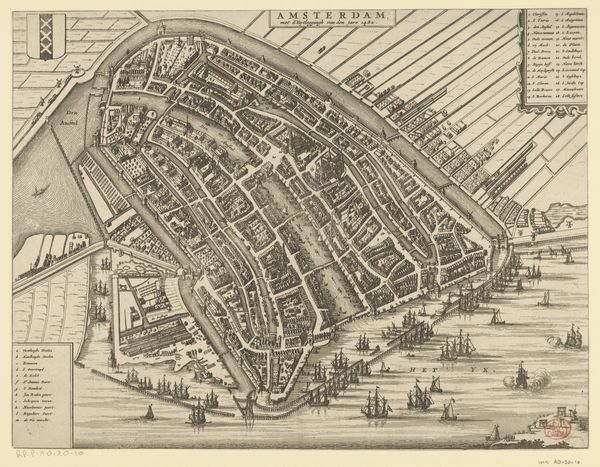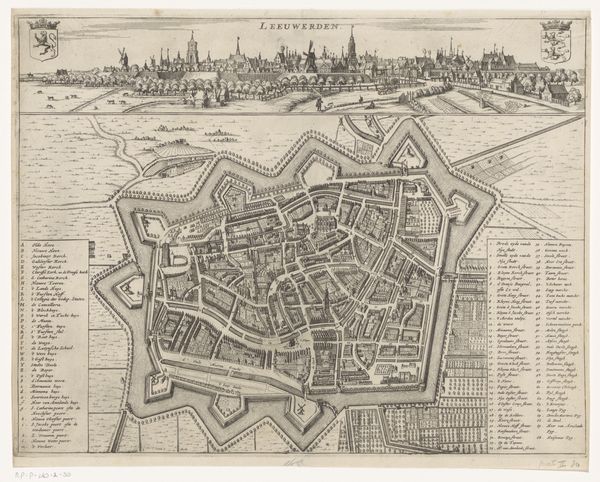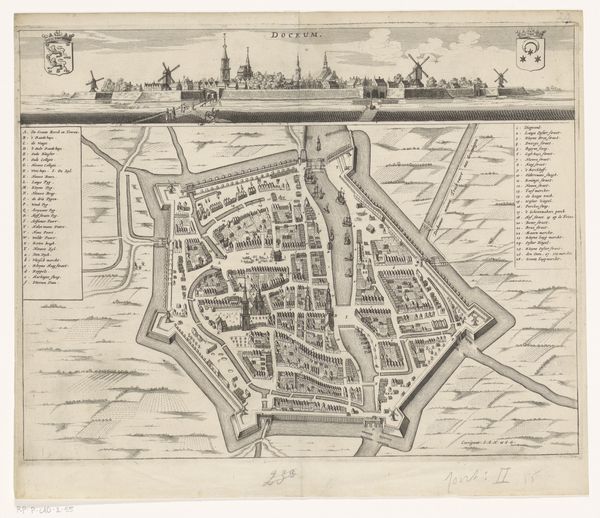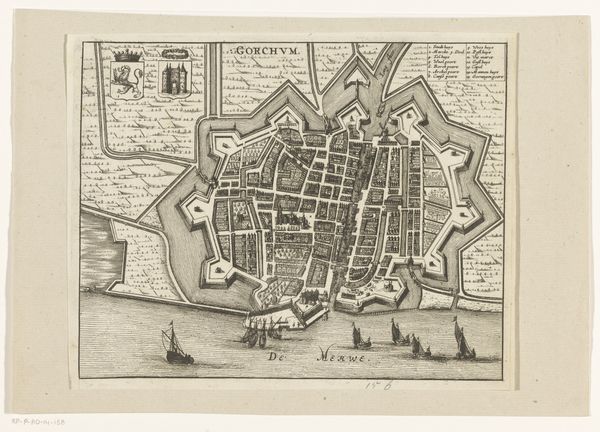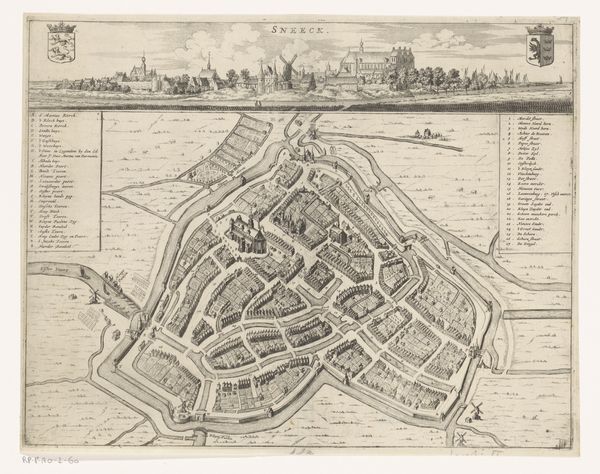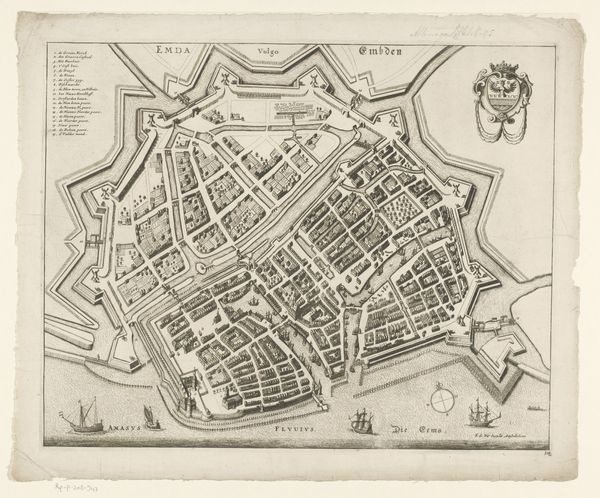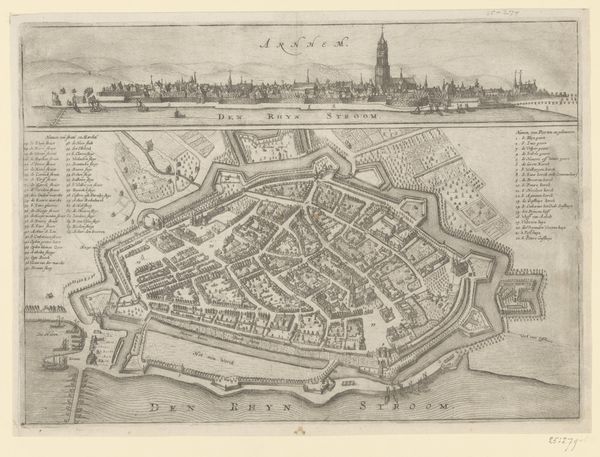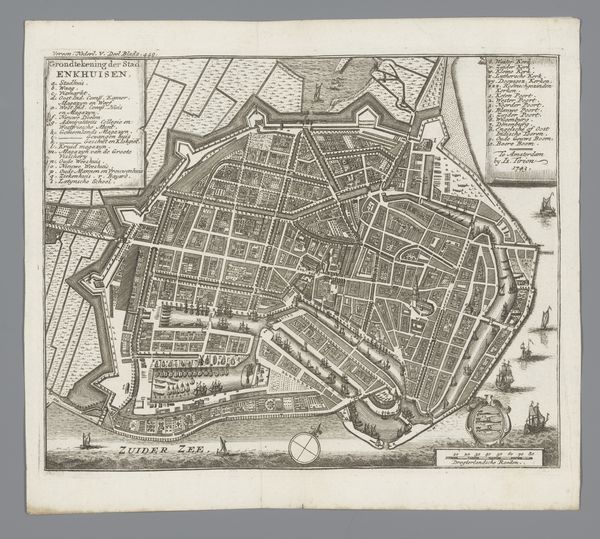
print, engraving
#
dutch-golden-age
# print
#
geometric
#
line
#
cityscape
#
engraving
Dimensions: height 151 mm, width 231 mm
Copyright: Rijks Museum: Open Domain
Curator: Looking at this meticulous map of Enkhuizen from 1632, created by an anonymous artist, I'm immediately struck by how precisely everything is rendered, almost obsessively so. It's currently held at the Rijksmuseum. Editor: It reminds me of staring into one of those incredibly detailed architectural models; except this is a whole city, carefully shrunk down to fit on paper. There’s something comforting in seeing it all laid out, everything in its place. Almost…a godlike view of a tiny world. Curator: Absolutely. The print, achieved through engraving, is a testament to the Dutch Golden Age's emphasis on trade, cartography, and civic pride. It showcases not just the layout of the city, but also its fortifications, its position relative to the Zuider Zee, emphasizing the infrastructure crucial for maritime trade. Editor: I love how you point out the practical aspects. It brings into focus what might be easily overlooked given all that pretty detail. Seeing those ships dotting the Zuider Zee, that’s Enkhuizen’s lifeblood represented there. What does the geometric organization tell us? Curator: The city's structured grid pattern speaks to Dutch urban planning and their penchant for organization. Every canal, street, and building contributes to an intricate network. Note that everything had its designed place in a much larger, interconnected whole geared toward trade, defense, and control. It's fascinating how this print offers insight into the city's social and economic dynamics, far beyond just a mere visual representation of place. Editor: I'm imagining some guild master or ship owner contemplating this very map, planning his next venture or shipment. It connects me to a very particular time, doesn’t it? To that particular mindset? There is definitely beauty and truth in its meticulous detail, yes, but perhaps even more in all that labor, calculation and all the social dynamics embodied within that precise aesthetic. Curator: Indeed. And hopefully we've managed to show that it is more than just "pretty," in a traditional art historical sense, because its materiality, and the society that demanded it, make the artifact much more rich. Editor: Yes. I feel grounded now, not just having floated above a miniature cityscape. It is like a little capsule of Dutch ambitions.
Comments
No comments
Be the first to comment and join the conversation on the ultimate creative platform.

